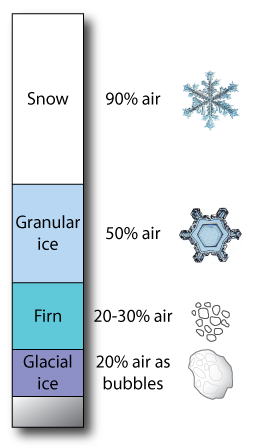How do glaciers form?

Glaciers consist predominantly of ice but can also include water, air pockets and debris, sometimes in large amounts. But where does the ice come from?
Glaciers form when there is so much snowfall and/or the air temperature is so cold that some of the snow survives through the summer and is still present when the next winter’s snowfall arrives. The old snow is then known as firn (or névé). If this happens for several years in a row then the firn becomes more & more compacted as it gets buried under more recent snow layers. The air which was originally trapped between the snowflakes is gradually squeezed out by the weight of the layers above. Eventually the firn becomes ice, with just a few small bubbles of air trapped between individual ice crystals. This body of ice is then the starting point of a glacier.